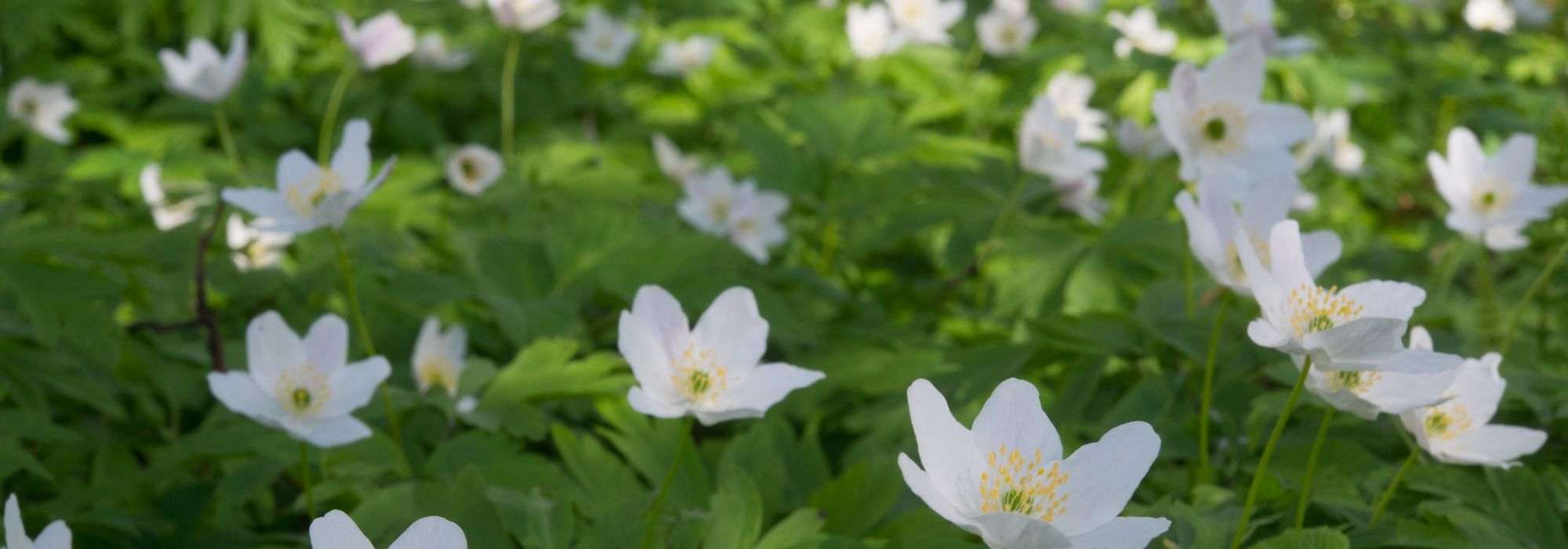
Associate wood anemones
6 ideas for pairing wood anemones to brighten up spring
Contents
The Wood Anemone, also known as anemone Sylvie, is a herbaceous plant native to Central Europe. This herbaceous plant grows in woodlands and hedgerows in all climates. The Anemone nemorosa is a spring-flowering plant. It blooms between March and April. It is also called “pâquette” because its flowering coincides with Easter celebrations.
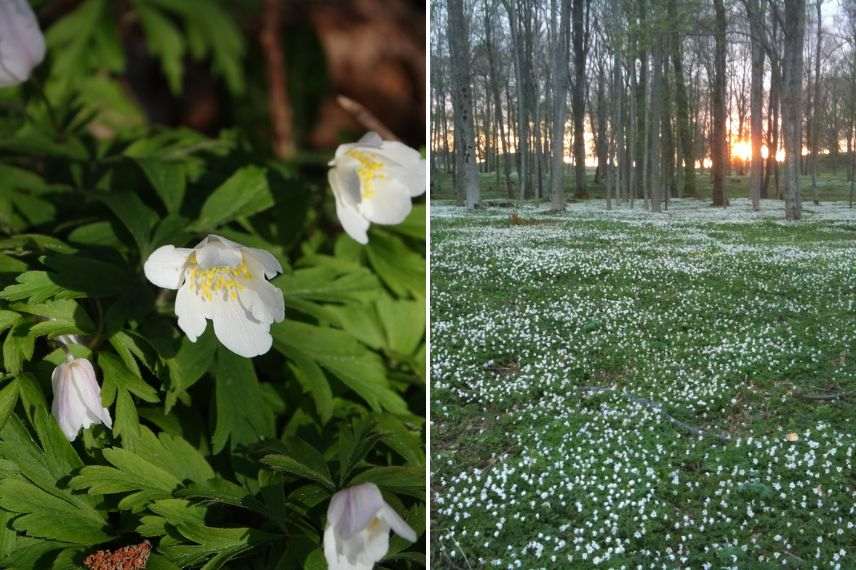
The wood anemone or anemone Sylvie brightens up the woodlands. The elegant white, pink, or blue flowers follow the sun’s path.
Discover our 6 ideas for combinations where the wood anemone beautifully brightens up spring.
To avoid any failures, we recommend planting appropriately and adopting our web application Plantfit.
In a shady rockery
The Anemone nemorosa ‘Lucia’ is a wood anemone with small white flowers that turn pink. Its unique foliage is formed of copper-coloured, finely cut leaves at the bud burst period. This beautiful anemone flowers for eight weeks wherever shade is present.
Pair the delicate anemone with the Mitchella repens to cover the free spaces in the rockery with its elegant foliage adorned with its pearly flowers and later its scarlet berries. Brighten the scene with the stunning blooms of the Aquilegia viridiflora ‘Chocolate Soldier’, a true spectacle for the senses with its bell-shaped, brown-purple flowers that emit a pleasant fragrance. More ground-covering, the flowers of the Crocus vernus ‘Remembrance’ create contrast with their bright orange stamens in a pearly blue corolla.
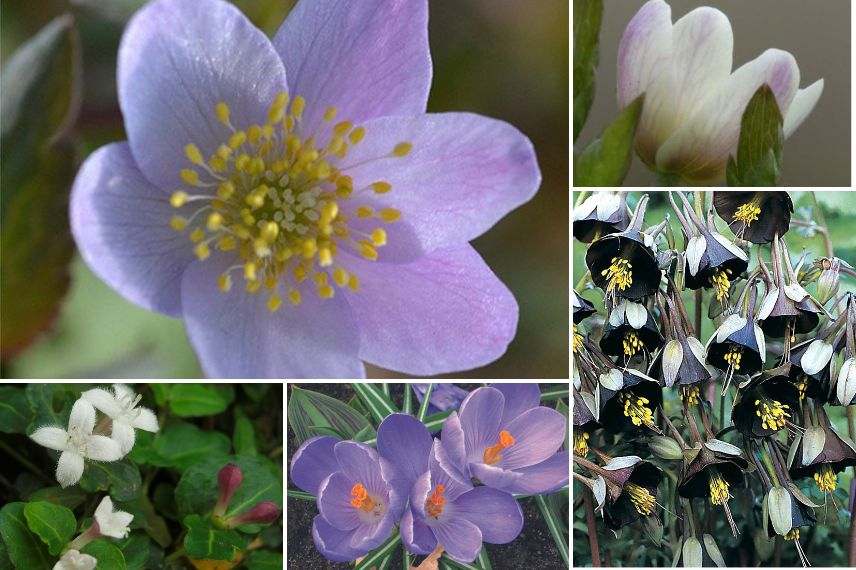
The porcelain colour harmony of the Anemone nemorosa ‘Lucia’ and the flowers of Mitchella repens is enlivened by the spectacle of the crocus blooms and especially the ‘Chocolate Soldier’ columbines.
At the foot of a hedge
The Anemone nemorosa ‘Robinsoniana’ is a small spreading wood anemone. From April to May, large solitary star-shaped flowers appear in pale lavender with a yellow centre and grey-cream undersides.
They thrive in partial shade alongside the sweet-scented Gallium odoratum, or sweet woodruff, which forms beautiful emerald carpets covered in lovely ivory-white flowers in spring, delicately scented. It adds the subtle charm of wild plants to the scene. Just like the hardy Geranium nodosum, whose abundant spring flowering lasts until early autumn. To add height to this scene, the Amsonia tabernaemontana salicifolia bears on bushy clumps a multitude of star-shaped flowers, electric blue fading to pastel as they wither.

A successful blue palette around the anemones ‘Robinsoniana’ with sweet woodruff, Geranium nodosum, and Amsonia salicifolia below.
Discover other Anemone
View all →Available in 2 sizes
Available in 2 sizes
Available in 0 sizes
Available in 2 sizes
Available in 1 sizes
Available in 1 sizes
Available in 1 sizes
Available in 1 sizes
Available in 1 sizes
Available in 2 sizes
In a border or a bank
The Anemone nemorosa ‘Leeds Variety’ is a floriferous and vigorous anemone with large, broad white flowers that blooms early and lasts long into spring and naturalises over time. An excellent groundcover, it is effective on even steep slopes.
At the edge of this scene, plant the Erythronium ‘Pagoda’ full of delicacy, with yellow lily-like flowers, alongside Lysimachia ciliata ‘Fire Cracker’, ideal for brightening a sunny slope with its beautiful chocolate-purple foliage and golden-yellow flowers. In mass with the anemone, the Liriope muscari ‘Monroe White’ with its dark green striped foliage, reminiscent of a grass, bears white spike flowers from late summer to autumn.
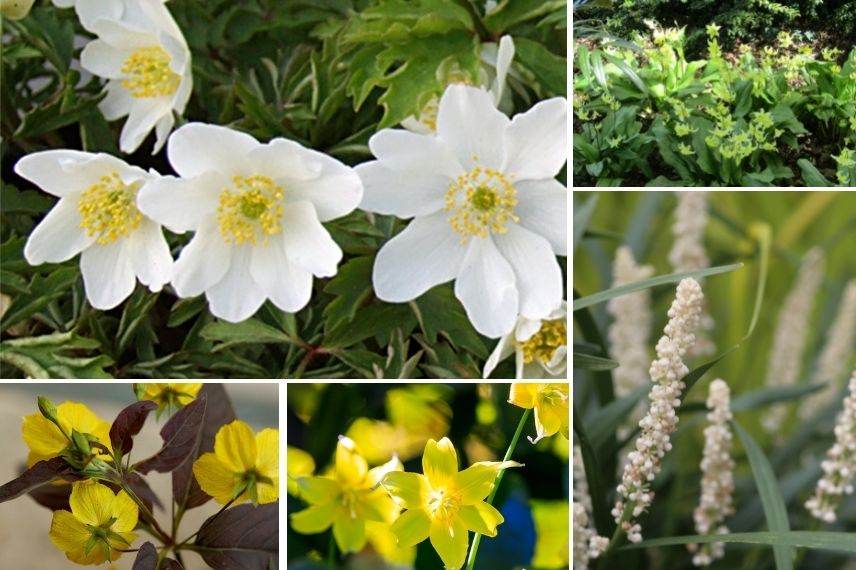
A colonising plant, the wood anemone ‘Leeds Variety’ blooms in a few years on a sunny or shady slope alongside the cream-white spikes of Liriope. At the foot of the slope, the yellow bells of the erythronium echo those of the large ‘Fire Cracker’ lysimachia in the background.
Read also
Wood anemone: succeed in its plantingIn a woodland
Anemone nemorosa ‘Lychette’ forms a dense and tall carpet with its flowering stems reaching 40 cm in height. It produces white flowers early and for a long time in spring.
This beautiful wood anemone naturalises over time, ultimately creating an excellent groundcover alongside the delicate white flowers of Trillium flexipes. Benefiting from this setting will be the lemon-yellow flowering of Uvularia grandiflora and the fern Dryopteris erythrosora whose feathery fronds change colour over time, resonating with the golden hues of the Hamamelis (x) intermedia ‘Feuerzauber.’ In this woodland setting, the Helleborus orientalis ‘Double Picotée’ displays its double flowers in cream with pink veining.
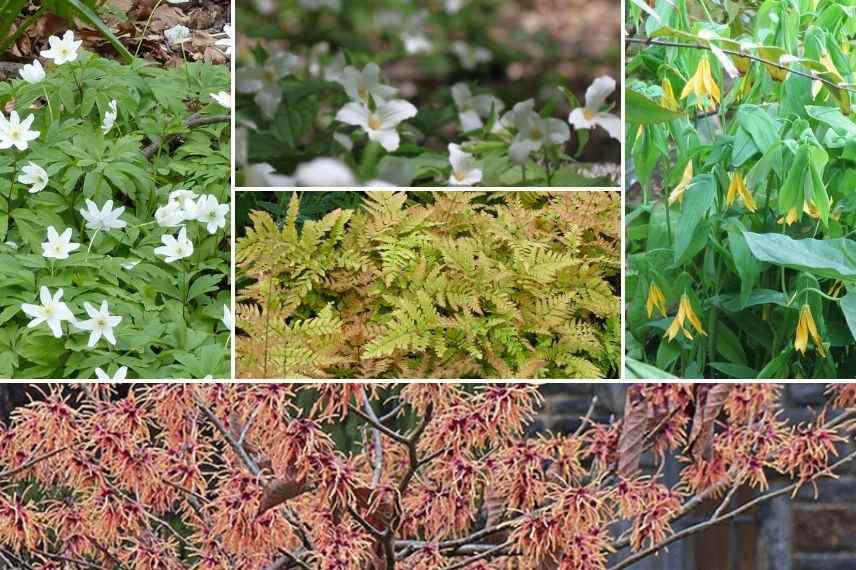
For a bright woodland, create this beautiful starry carpet where the anemones ‘Lychette’ mingle with the white Trillium flexipes. The yellow bells of Uvularia grandiflora connect the delicate hamamelis and the golden feathery fronds of the Dryopteris.
In a contemporary garden
The Anemone nemorosa ‘Green Fingers’ is a surprisingly variable variety of wood anemone with flowers that differ in appearance. They feature a corolla of white petals with a purple reverse, surrounding a small collar of greenery similar to its finely dissected foliage.
This low-growing variety is ideal as a groundcover at the base of the splendid Betula utilis jacquemontii, the Himalayan white birch. It allows light to reach the Sarcococca hookeriana var. digyna ideal for enlivening the garden with its evergreen foliage and highly fragrant white flowers. Enhance the ensemble with the Astrantia major ‘Star of Treasure’ featuring flowers in shades of old rose and claret red and the bright Narcissus ‘Ice Follies’ for a touch of natural beauty.
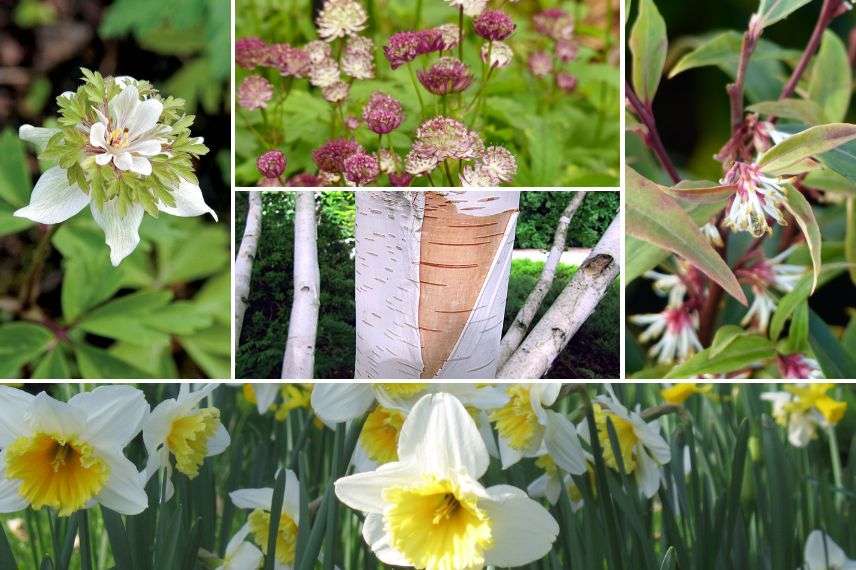
The ‘Green Fingers’ anemones highlight the sophisticated architecture dictated by the Betula utilis birch and the ‘Star of Treasure’ astrantias. The natural aspect is complemented by the daffodils and the sweet scent of the sarcococca in winter.
In a meadow fresh
The Anemone nemorosa ‘Bracteata Plena’ is a decorative form of wood anemone, with an exotic appearance that catches the eye. It blooms in spring, offering its semi-double white flowers, splashed with green. While it is undeniably unusual, this variety is also very elegant and refined.
Pair it with the Kamchatka Lily Fritillaria camschatcensis with its astonishing bell-shaped purple-chocolate flowers in a dense carpet of pure white blooming Myrrhis odorata whose large fern-like leaves complement those of Filipendula ulmaria ‘Plena’.
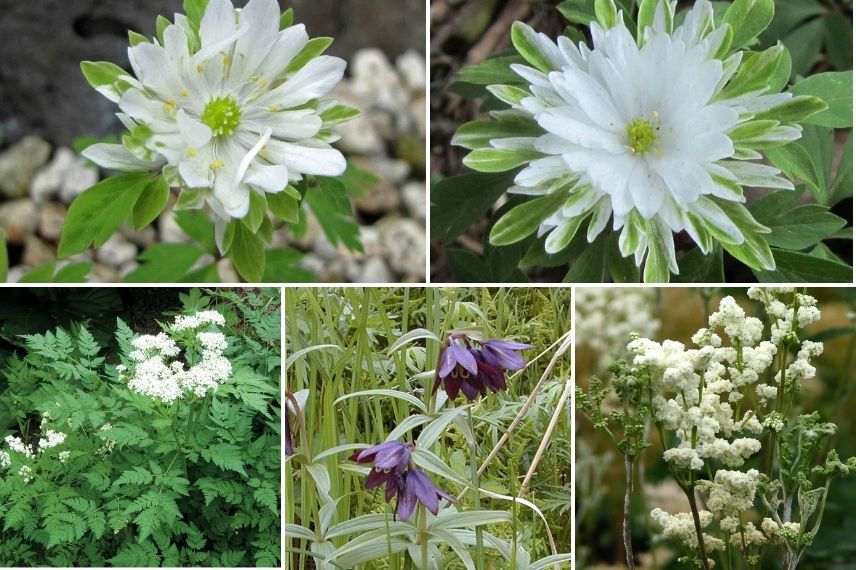
The anemone bracteata with its elegant and refined white flowers complements the finely cut foliage of Myrrhis odorata and Filipendula, creating an ideal setting for the chocolate-coloured fritillary.
- Subscribe!
- Contents
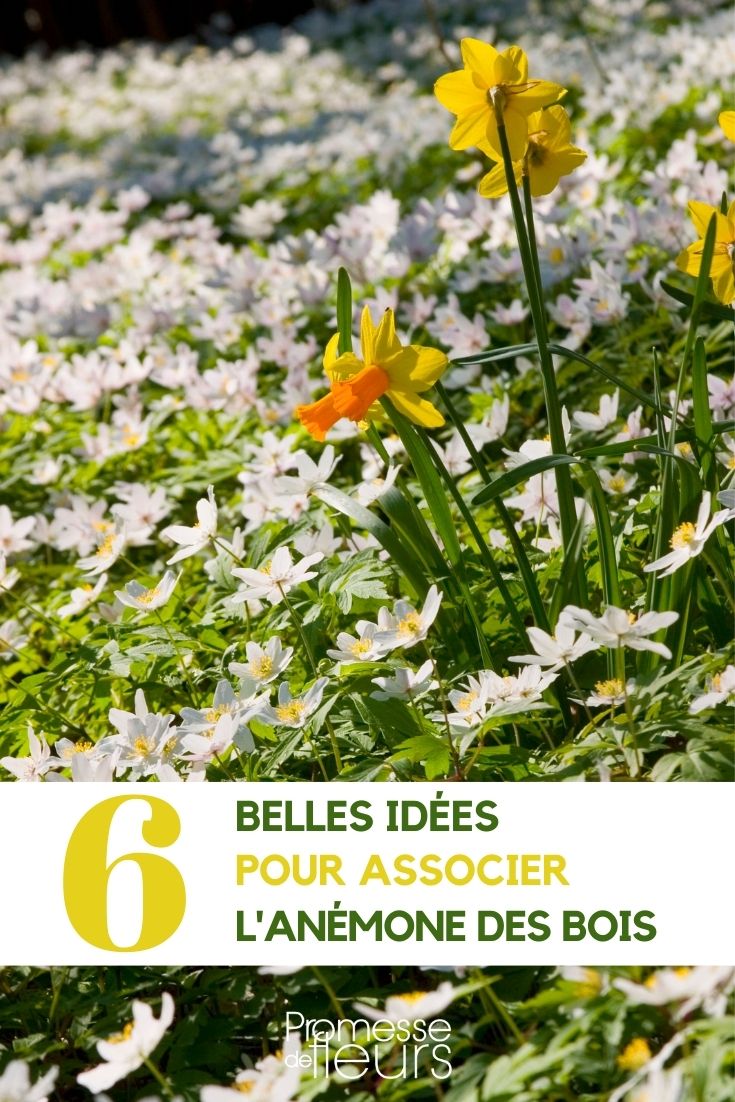































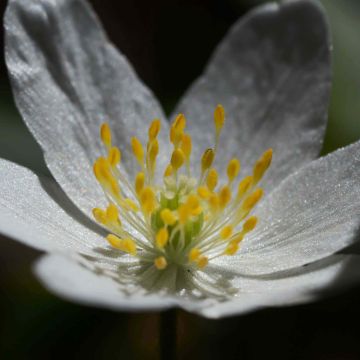
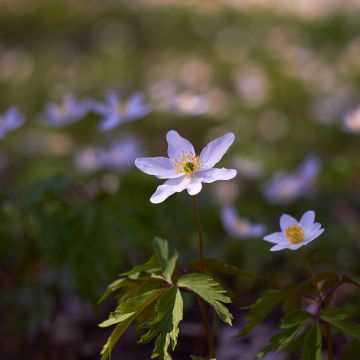



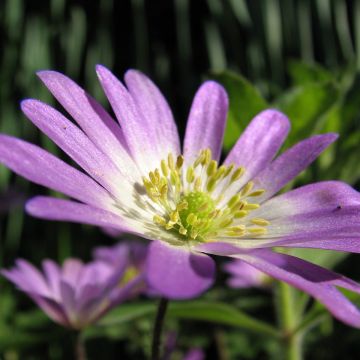
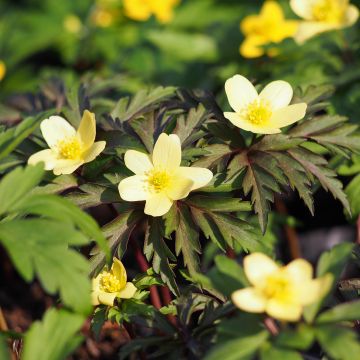
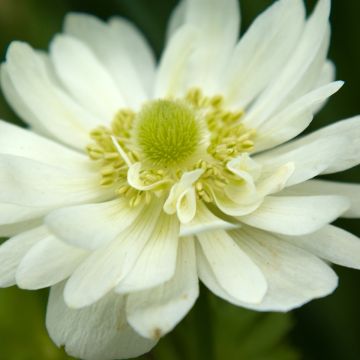


Comments